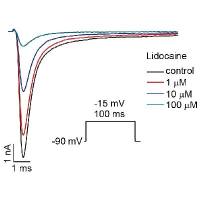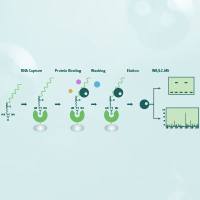膜片钳实验所需器材物品
互联网
2832
Although patch clamp set-ups range from a simple rig to the most
elaborate patch clamp arrangements in which a large number of variables
are carefully controlled, there is a basic set of conditions that must be met
in all cases for patch clamping to work. These conditions will be discussed
in this Chapter. In brief, because patch clamping involves the placement of
a glass micropipette onto a cell to form a tight seal, the basic elements of a
set-up are
• a platform with minimal mechanical interference;
• a microscope for visualisation of the preparation;
• manipulators to position the micropipette;
• electronics to perform stimulation, recording and analysis in an
electrically clean environment.
These elements will be discussed in turn below.
elaborate patch clamp arrangements in which a large number of variables
are carefully controlled, there is a basic set of conditions that must be met
in all cases for patch clamping to work. These conditions will be discussed
in this Chapter. In brief, because patch clamping involves the placement of
a glass micropipette onto a cell to form a tight seal, the basic elements of a
set-up are
• a platform with minimal mechanical interference;
• a microscope for visualisation of the preparation;
• manipulators to position the micropipette;
• electronics to perform stimulation, recording and analysis in an
electrically clean environment.
These elements will be discussed in turn below.
3 Requirements 43
3.1 The Platform 43
3.1.1 Stability: vibrations and drift 43
3.1.2 Where in the building should the set-up be placed? 44
3.1.3 Anti-vibration tables 45
3.2 Mechanics and Optics 47
3.2.1 The microscope 48
3.2.2 Micromanipulators 52
3.2.3 Pipette pressure 56
3.2.4 Baths and superfusion systems 57
3.3 Electrodes and Micropipettes 64
3.3.1 Solid�liquid junction potentials and polarisation 65
3.3.2 The bath electrode 67
3.3.3 Micropipettes 67
3.3.4 Liquid junction potentials 74
3.4 Electronics 75
3.4.1 External noise and Faraday cages 76
3.4.2 Patch clamp amplifiers 81
3.4.3 Noise prevention and signal conditioning 84
3.4.4 Data acquisition and digitisation 90
3.4.5 Computers and software 93
<center>
<p>
</p>
</center>
3.1 The Platform 43
3.1.1 Stability: vibrations and drift 43
3.1.2 Where in the building should the set-up be placed? 44
3.1.3 Anti-vibration tables 45
3.2 Mechanics and Optics 47
3.2.1 The microscope 48
3.2.2 Micromanipulators 52
3.2.3 Pipette pressure 56
3.2.4 Baths and superfusion systems 57
3.3 Electrodes and Micropipettes 64
3.3.1 Solid�liquid junction potentials and polarisation 65
3.3.2 The bath electrode 67
3.3.3 Micropipettes 67
3.3.4 Liquid junction potentials 74
3.4 Electronics 75
3.4.1 External noise and Faraday cages 76
3.4.2 Patch clamp amplifiers 81
3.4.3 Noise prevention and signal conditioning 84
3.4.4 Data acquisition and digitisation 90
3.4.5 Computers and software 93
上一篇:The Practice of Patch Clamping--膜片钳操作 下一篇:Basic Theoretical Principles--膜片钳基本理论







